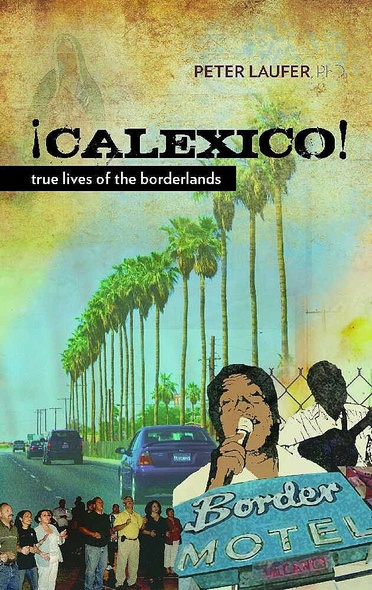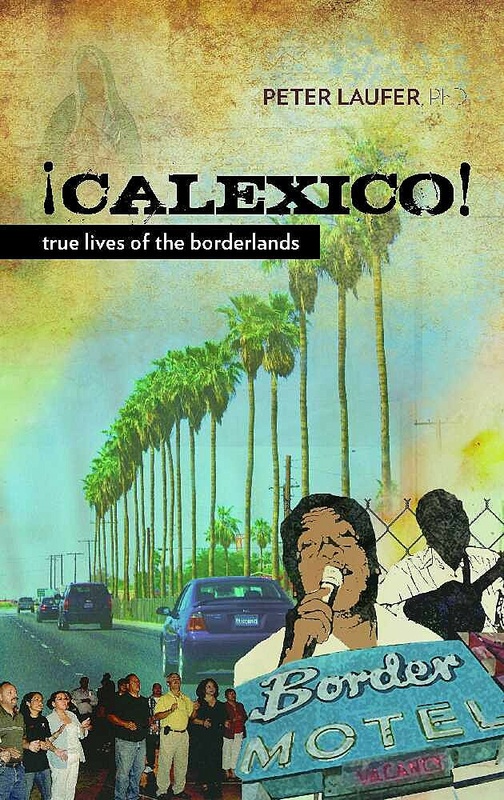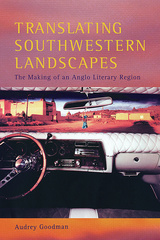These days everyone has something to say (or declaim!) about the U.S.–Mexico border. Whether it’s immigration, resource management, educational policy, or drugs, the borderlands are either the epicenter or the emblem of a current crisis facing the nation. At a time when the region has been co-opted for every possible rhetorical use, what endures is a resilient and vibrant local culture that resists easy characterization. For an honest picture of life on the border, what remains is to listen to voices that are too often drowned out: the people who actually live and work there, who make their homes and livings amid a confluence of cultures and loyalties. For many of these people, the border is less a hyphenated place than a meeting place, a merging. This aspect of the border is epitomized in the names of two cities that straddle the line: Calexico and Mexicali.
A “sleepy crossroads that exists at a global flashpoint,” Calexico serves as the reference point for veteran journalist Peter Laufer’s chronicle of day-to-day life on the border. This wide-ranging, interview-driven book finds Laufer and travel companion/photographer on a weeklong road trip through the Imperial Valley and other border locales, engaging in earnest and revealing conversations with the people they meet along the way. Laufer talks to secretaries and politicians, restaurateurs and salsa dancers, poets and real estate agents about the issues that matter to them the most.
What draws them to border towns? How do they feel about border security and the fences that may someday run through their backyards? Is “English-only” a realistic policy? Why have some towns flourished and others declined? What does it mean to be Mexican or American in such a place? Waitress Bonnie Peterson banters with customers in Spanish and English. Mayor Lewis Pacheco laments the role that globalization has played in his city’s labor market. Some of their anecdotes are humorous, others grim. Moreover, not everyone agrees. But this very diversity is part of the fabric of the borderlands, and these stories demand to be heard.
A “sleepy crossroads that exists at a global flashpoint,” Calexico serves as the reference point for veteran journalist Peter Laufer’s chronicle of day-to-day life on the border. This wide-ranging, interview-driven book finds Laufer and travel companion/photographer on a weeklong road trip through the Imperial Valley and other border locales, engaging in earnest and revealing conversations with the people they meet along the way. Laufer talks to secretaries and politicians, restaurateurs and salsa dancers, poets and real estate agents about the issues that matter to them the most.
What draws them to border towns? How do they feel about border security and the fences that may someday run through their backyards? Is “English-only” a realistic policy? Why have some towns flourished and others declined? What does it mean to be Mexican or American in such a place? Waitress Bonnie Peterson banters with customers in Spanish and English. Mayor Lewis Pacheco laments the role that globalization has played in his city’s labor market. Some of their anecdotes are humorous, others grim. Moreover, not everyone agrees. But this very diversity is part of the fabric of the borderlands, and these stories demand to be heard.
Peter Laufer, PhD, is the winner of major awards for excellence in reporting—including the George Polk and Edward R. Murrow awards—and an independent journalist, broadcaster and documentary filmmaker working in traditional and new media. He has crossed and reported from various borders around the world, including the DMZ between North and South Korea, and the Pakistan–Afghanistan border. He is the author of several other books, including Wetback Nation: The Case for Opening the Mexican–American Border. He holds the James Wallace Chair in Journalism at the University of Oregon School of Journalism and Communication.






